Classic motorcycle original paint comes with many expectations that just cannot be met. I wrote about unrestored classic motorcycles last March in this article, because some investors will only buy unrestored classic motorcycles. Many collectors believe that they have unrestored motorcycles and they clearly do not. This article is there to inform you about what to look for in unrestored paint and it’s there as a basis for a future article about how we recreate original looking and feeling paint. Restoration is an art and it’s not about re-creating Dinky toy overly shiny representations of old vehicles, it’s about authenticity.
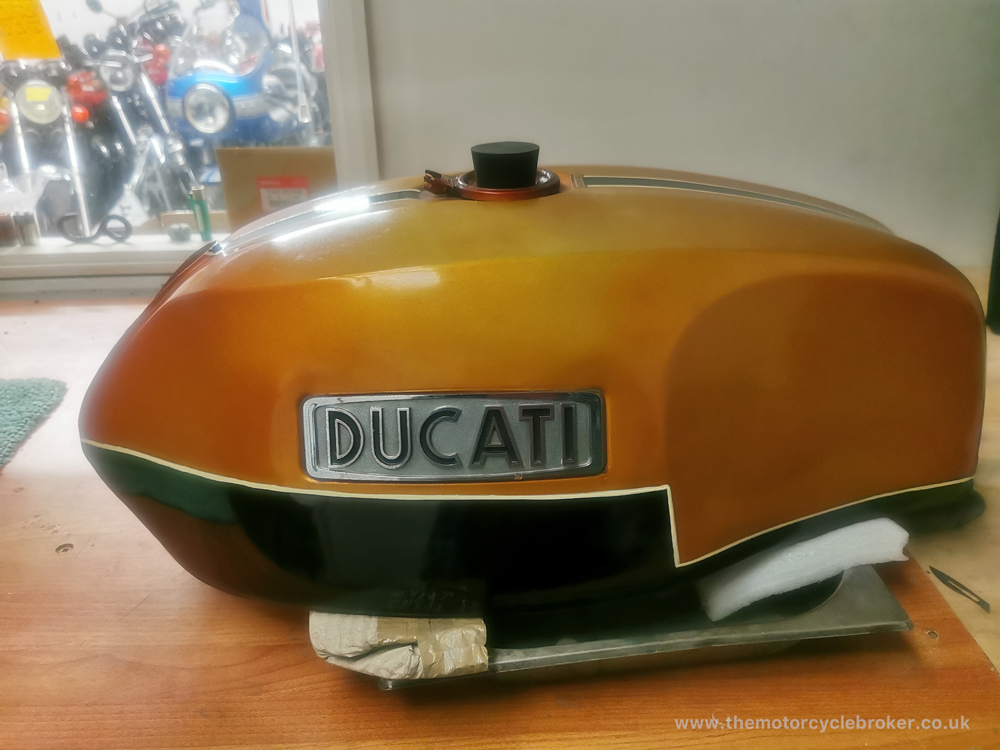
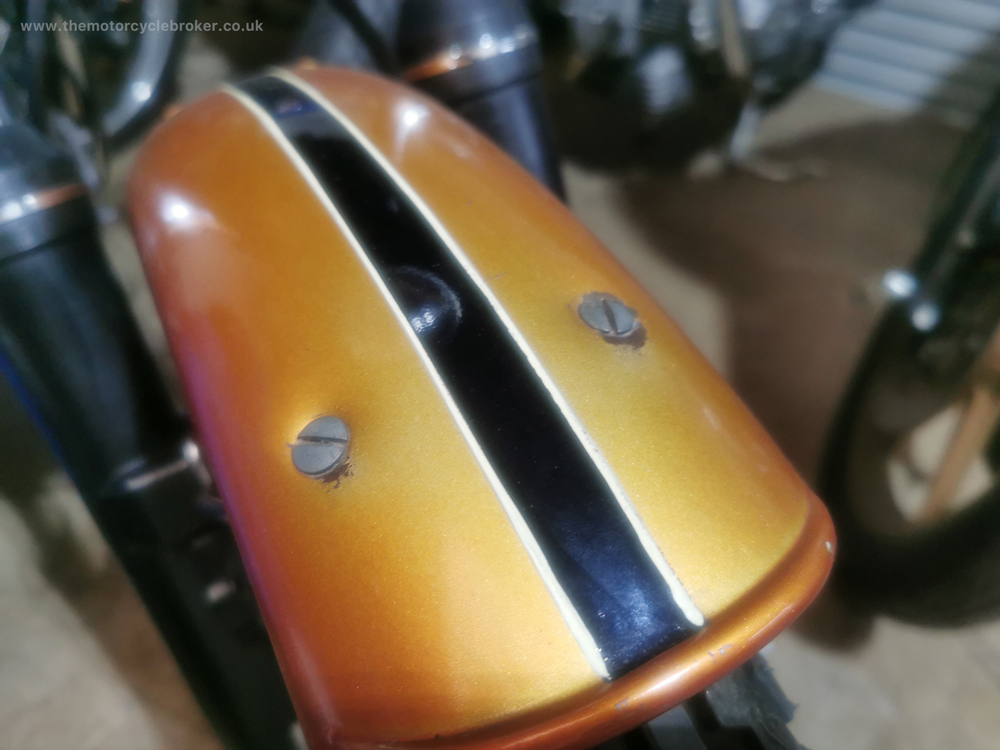
Ducati original paint
Ducati original paint has its own issues which are unique to the brand, especially during the 1970s and 80s. They used cellulose paint which never goes off and is permanently curing, which means that thinners are forever evaporating from the paintwork. The paint will forever be shrinking as thinners leave the covering until the paintwork starts to craze, which will always happen over time. Ducati weren’t bothered about their paint finishes, they spent the money on the motors not the finish. The paint area was filthy and it was a lottery as to whether or not the new owner bought a motorcycle with fistfuls of dirt in the paint or not. Colours vary outlandishly with Ducati, some panels may vary even on the same motorcycle, especially the orange 750 Sport round case and the 916 series, to name but a few. The GT750s which were painted in candy colours often varied in colour from one side of a petrol tank to the other, let alone each panel.
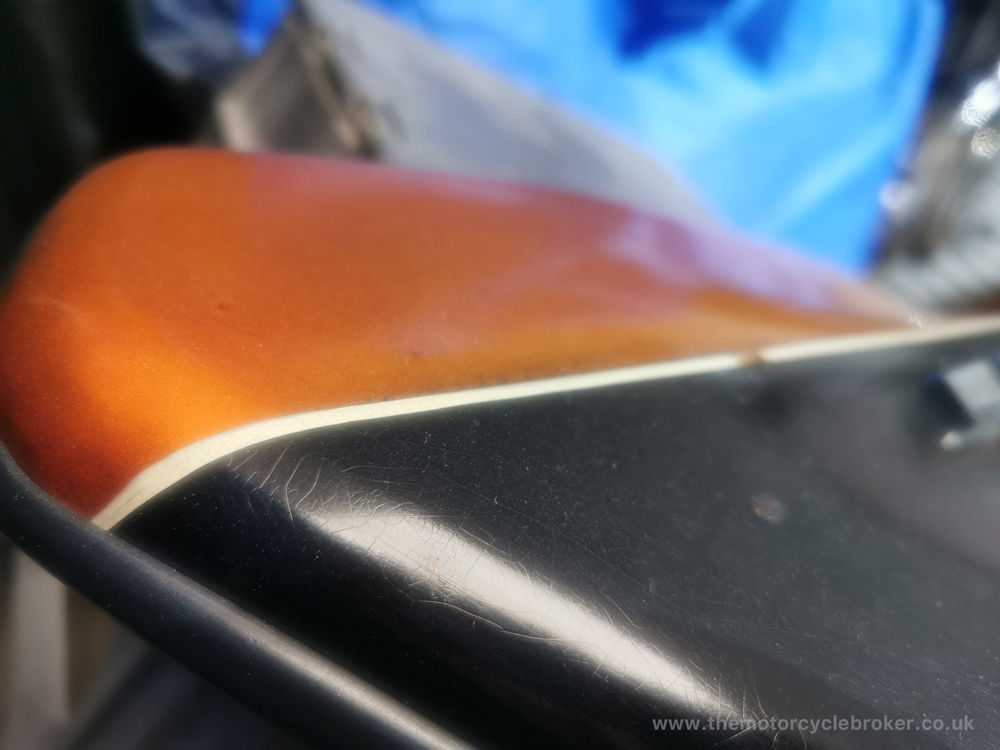
Ducati transfers
Ducati used waterslide transfers instead of vinyl stickers until about 1984, I believe. If the motorcycle got wet or any petrol was spilt on the transfers they crazed and broke up, as in the picture below. Even sunlight would cause them to craze as the steel of the petrol tank expanded in the sunlight and then contracted over winter. Sunlight alone causes waterslide transfers to break and crack due to the effect of UV rays on the transfer.
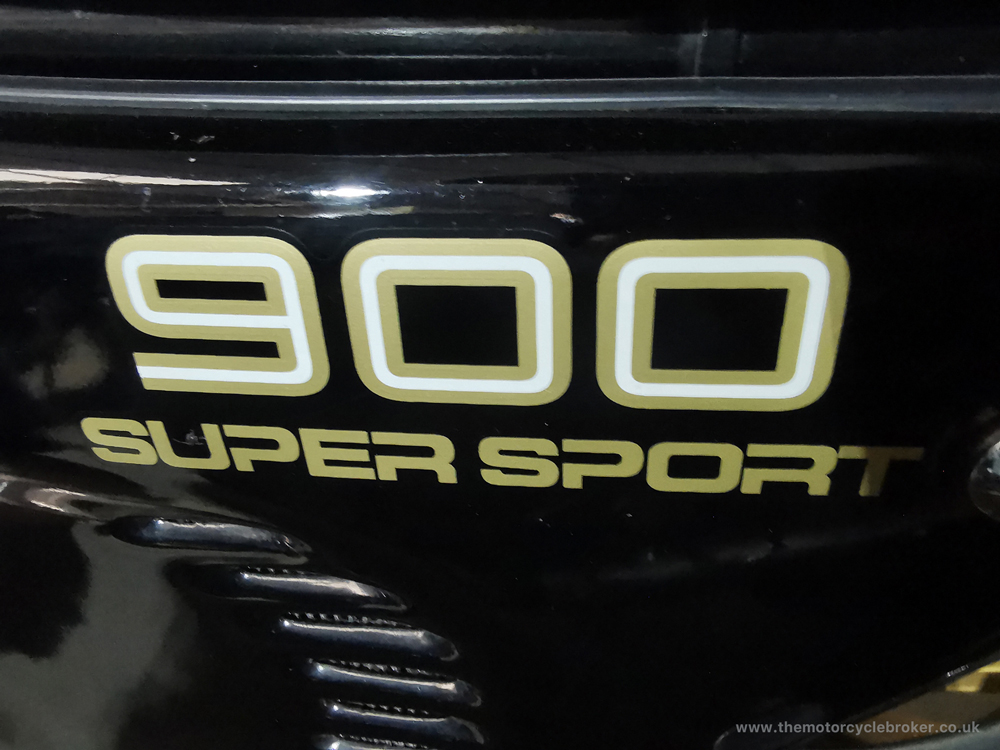
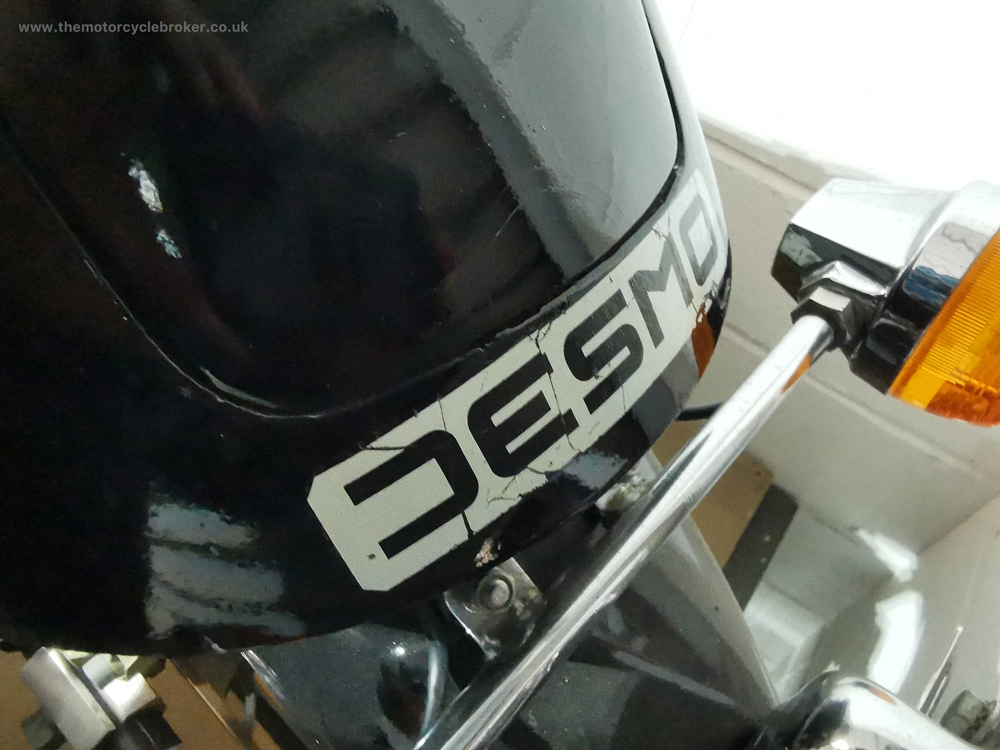
Painted fibreglass
Painted fibreglass comes with its own unique issues, no matter which brand uses it. Many Japanese homologation specials, such as Honda RC30s, VF1000Rs and CB1100Rs, had very high specification fibreglass body panels and fairings. Fibreglass does not bond long term very well with any paint and quite often the paint will de-laminate. Over time, fibreglass become brittle and shrinks and any machine which is forty years old will have all sorts of problems around the fibreglass. Many Honda RC30 owners have removed their original body work to find it will no longer fit and all the holes to attach the body work will have moved. RC30s also have a tendency for sagging just behind the saddle where the fibreglass goes soft, because the seat units were badly made when new. Original painted fibreglass often micro blisters either due to poor paint, or the fibreglass not being baked to remove the air from the gel coat when they were made new. Original Ducati fibreglass is notorious for micro blistering due to air pockets in the coloured gel coat escaping once the gel coat has cured.
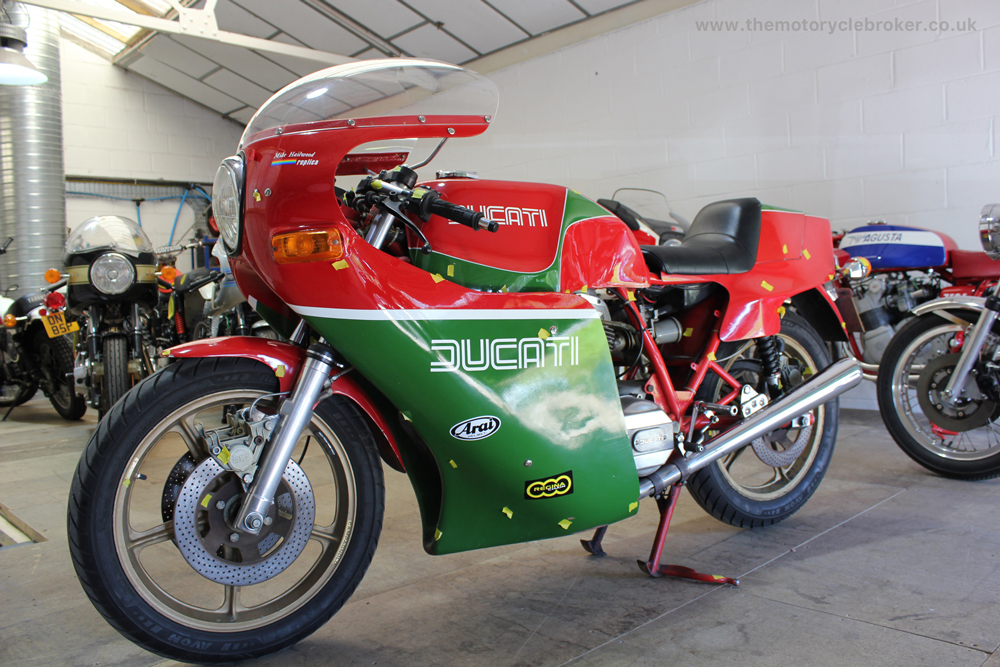
Coloured plastics
Some coloured plastics are impregnated with colour when they’re manufactured and others are painted. Age takes its toll on plastic in different ways to fibreglass, as the plastic goes hard and brittle over time. Fairing panels tend to break around fixing points as they go hard and brittle with age. Plastics impregnated with colour change colour over time, as you can see in the picture below of the white Yamaha XT500 front mudguard which is turning yellow. Polishing plastics takes a lot longer than painting plastics, but certain plastics are incredibly challenging to paint. Whereas some plastics accept paint very well and are designed to be painted. Where fairings and seat units become hard and brittle with age, they tend to break anywhere they are attached to a mounting bracket. When the plastics were new, they were fairly flexible around these rigid fixing points. However, with the passage of time the plastic becomes quite rigid, hard and brittle with no more ability to accept the shocks of constant vibration. Something has to give and the plastic cracks around the fixing points.
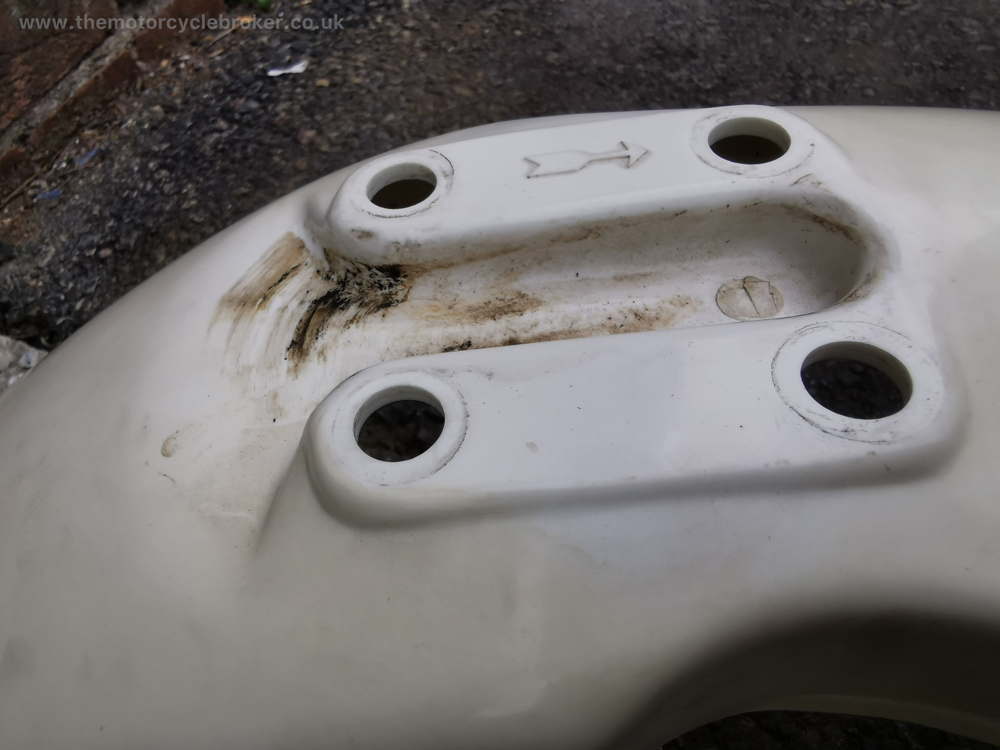
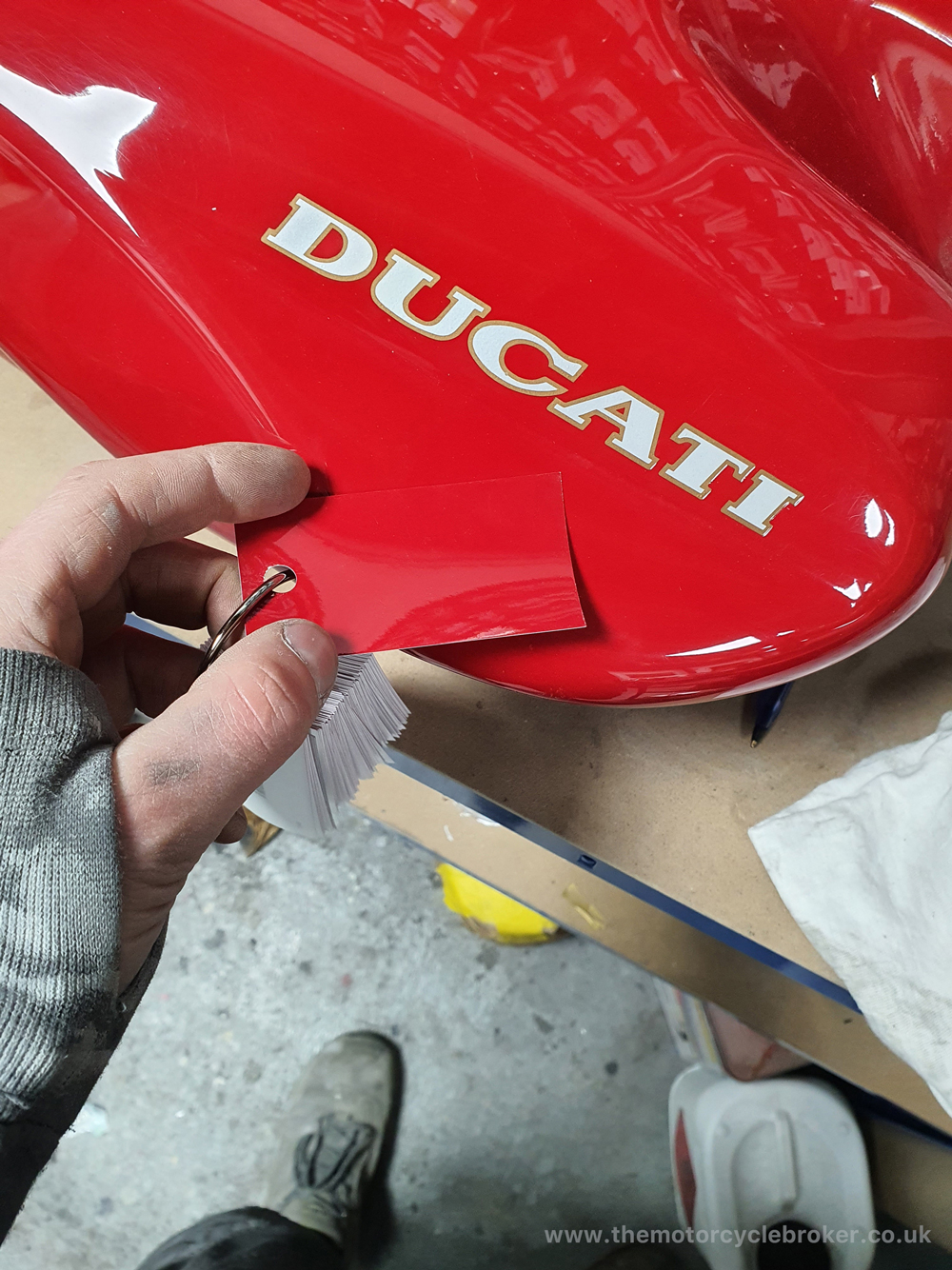
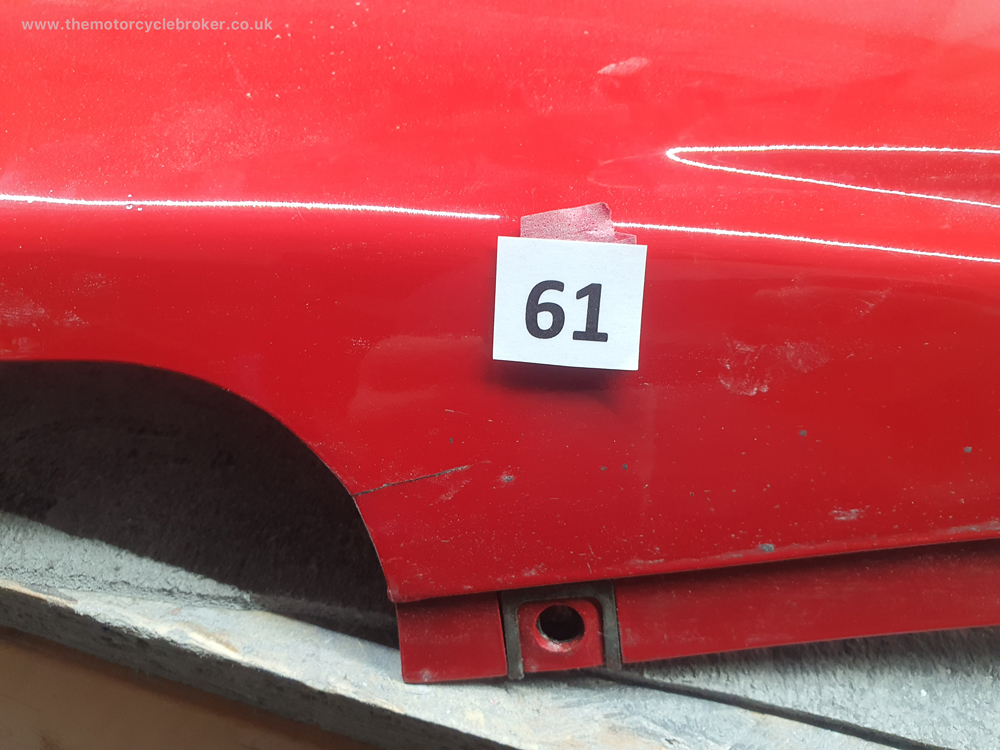
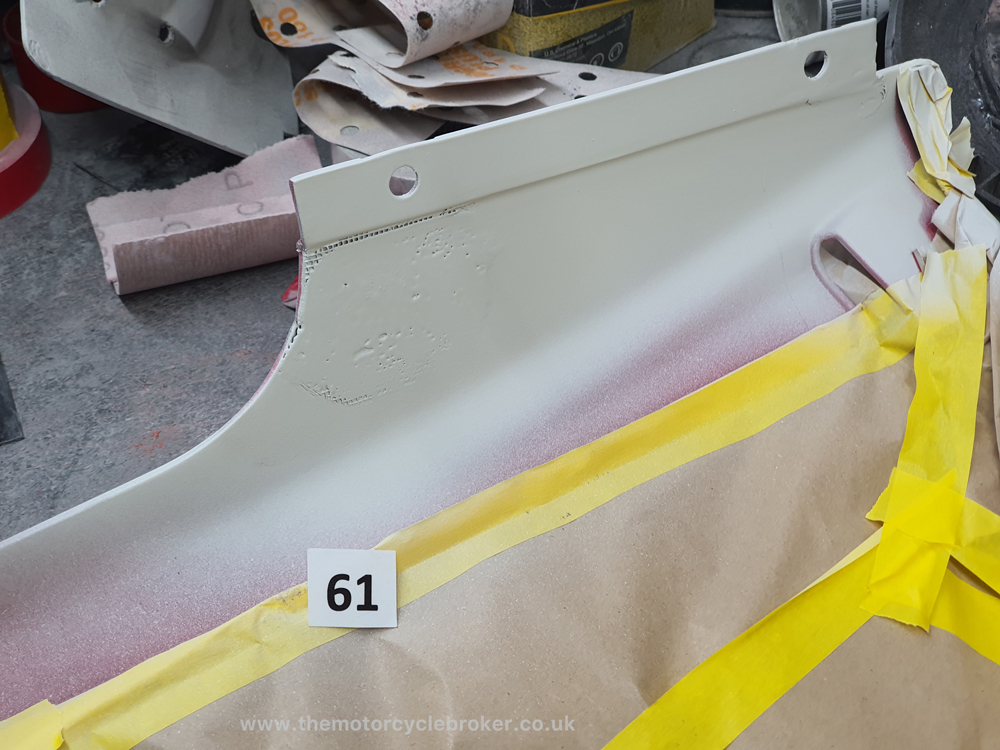
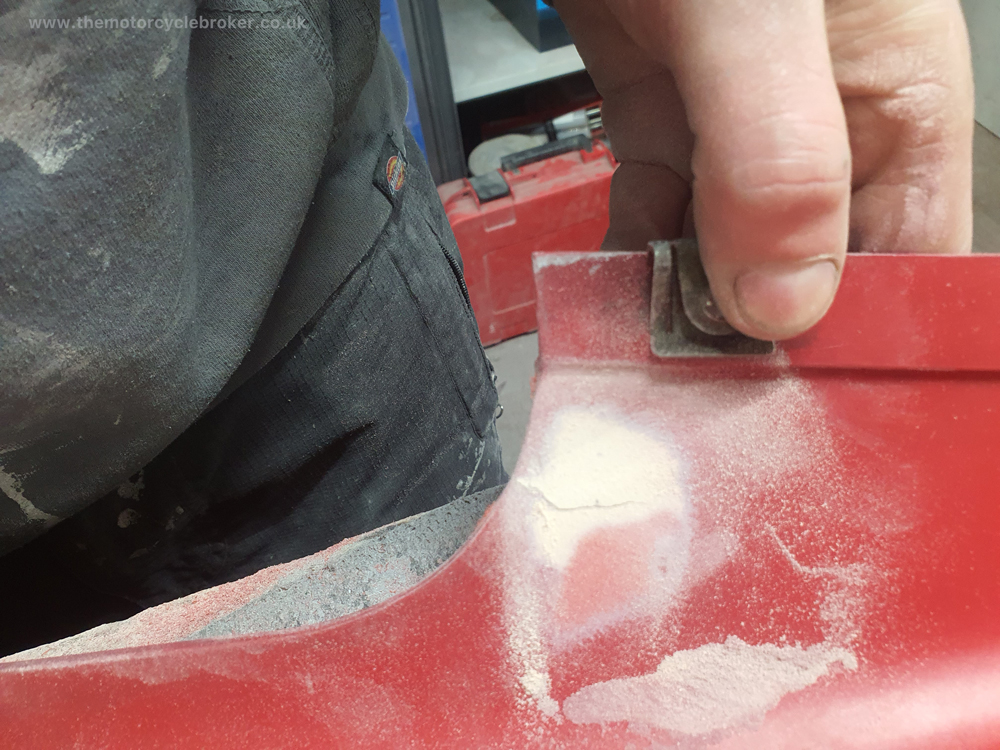
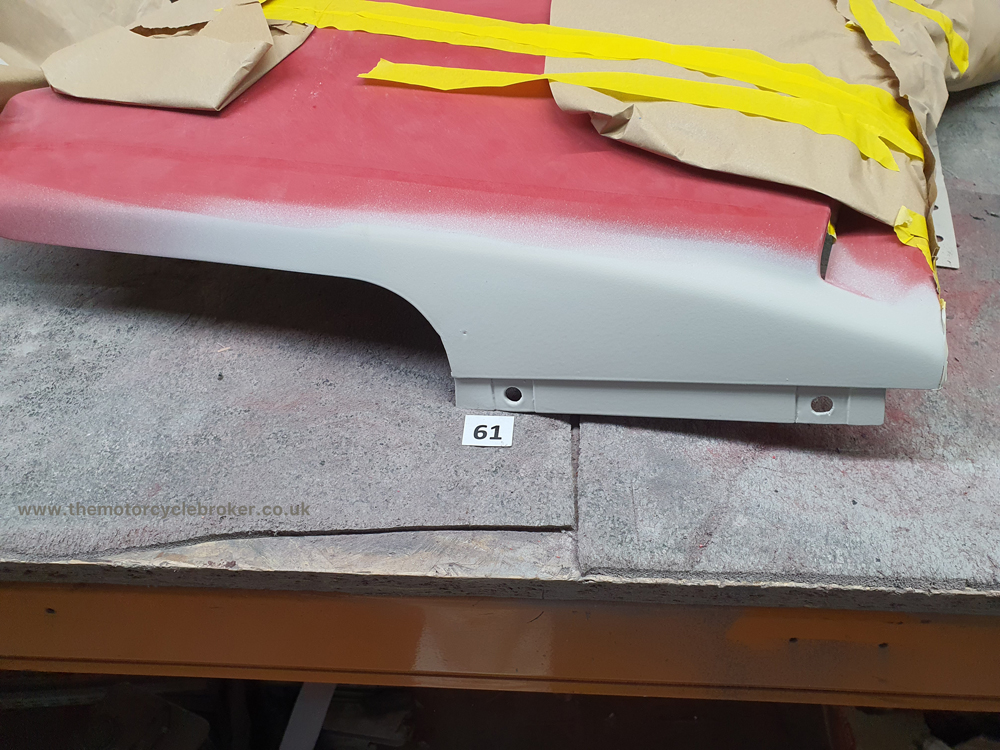
Fibreglass fixing points
Fibreglass fixing points are vulnerable, just like plastic fixing points are, but there are more complications with fibreglass. You can see from the pictures below how the paint de-laminates around the fixing point with old fibreglass. In the case of Ducati paint work this delamination at the fixing points could often occur within the first week of ownership. Once the fixing points are resolved and the paint applied using modern products, the vibration will still cause the paint to de-laminate. Most manufacturers did not cushion the fibreglass to absorb vibration. New rubberised washers need to be fitted to prevent any future damage due to vibration. Over time, as I said, fibre glass also shrinks which means that the holes move where the body panel is attached. Once the bodywork is removed, it cannot be re-attached.
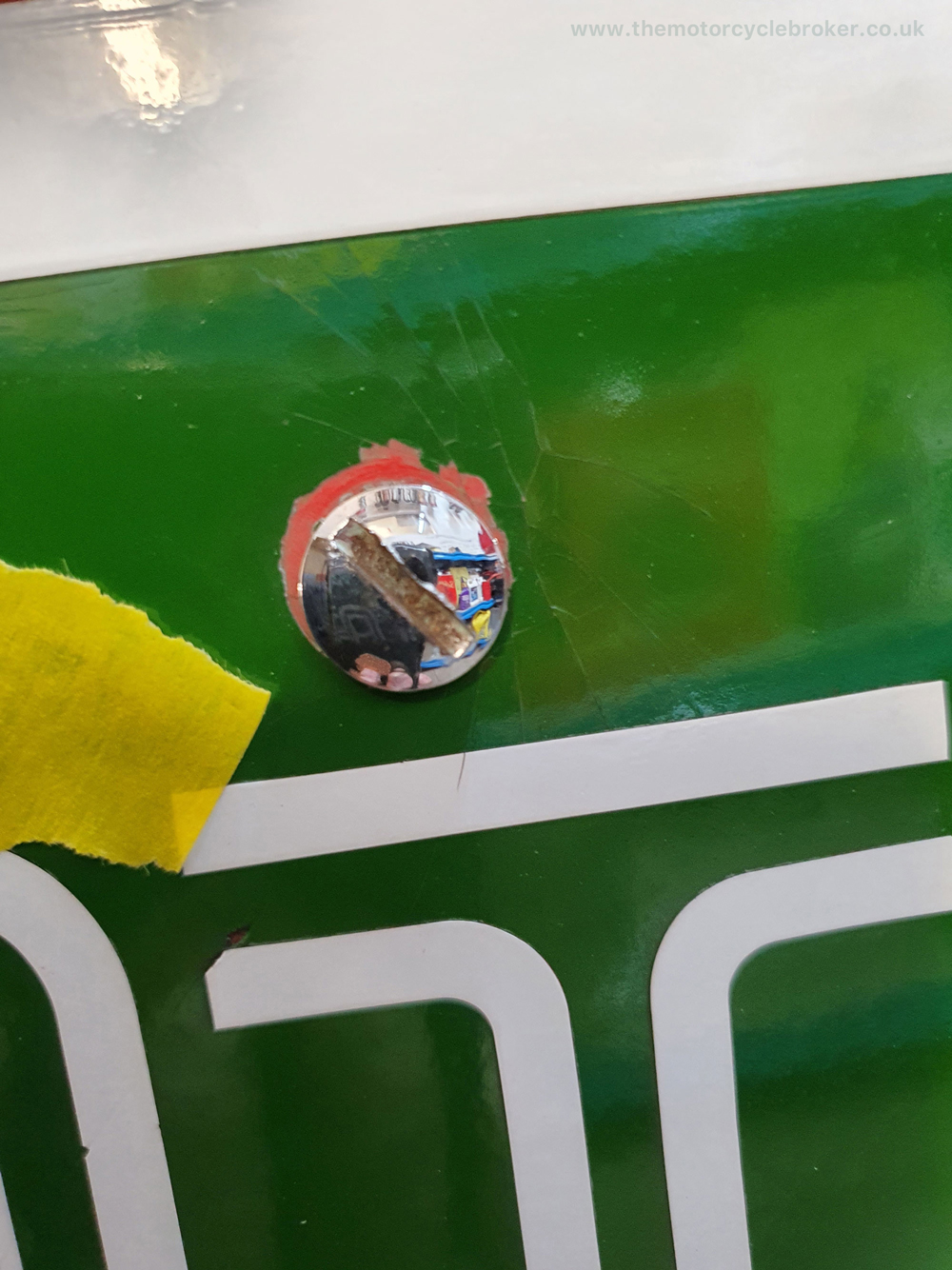
Fibreglass fixing points repair after shrinkage
Fibreglass fixing points repair after shrinkage can only be properly resolved by stripping the gel coat in the affected area. The hole is then fibre glassed over at each fixing point. The body panel is then offered up again, ensured everything is straight and exactly where it should be and then re-drilled. The Honda VF1000R we did a couple of years ago, as you can see below, had some of the fixing points moved by up to 10mm. Once the new holes are correctly created and dressed, then the body panel can be painted.
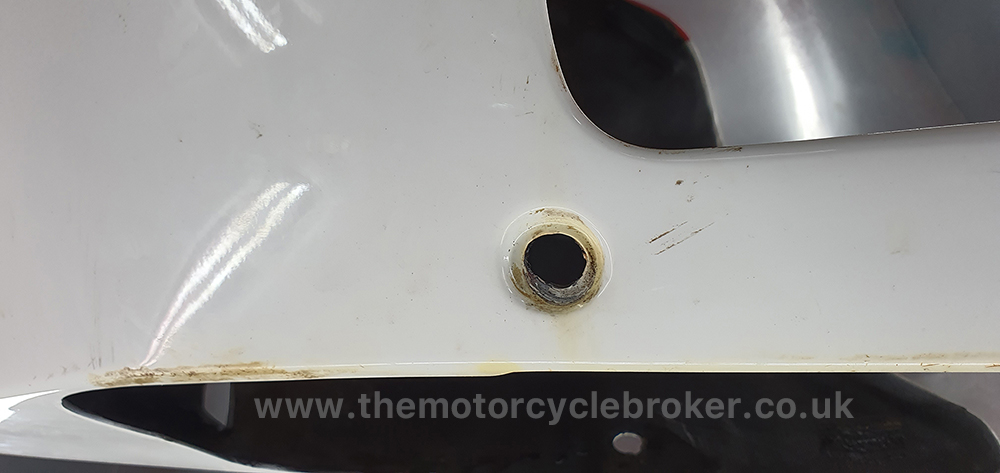
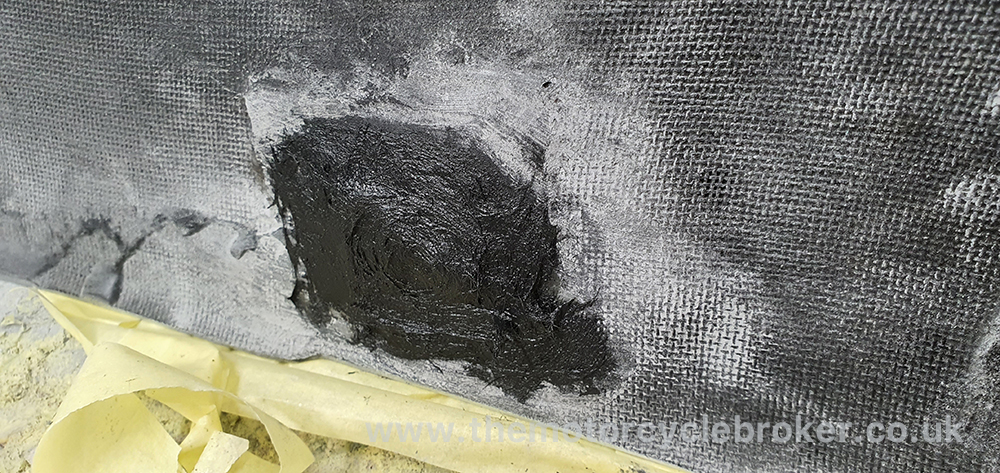
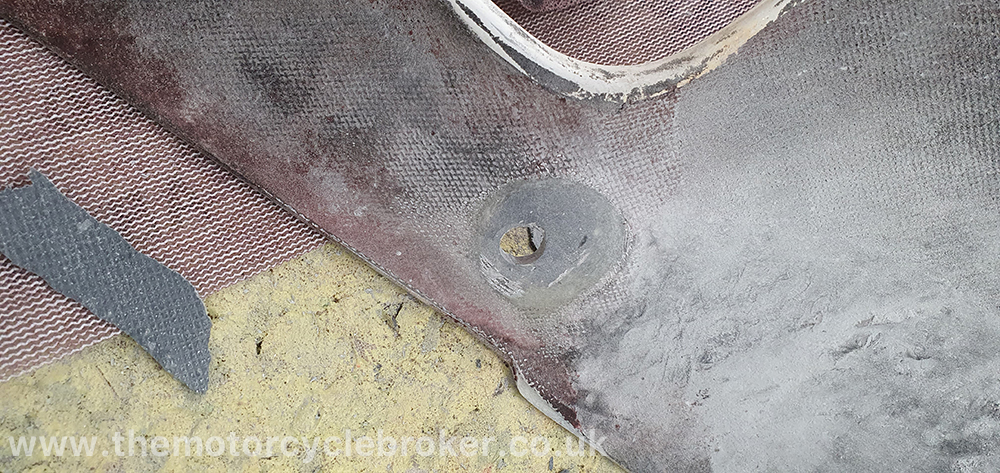
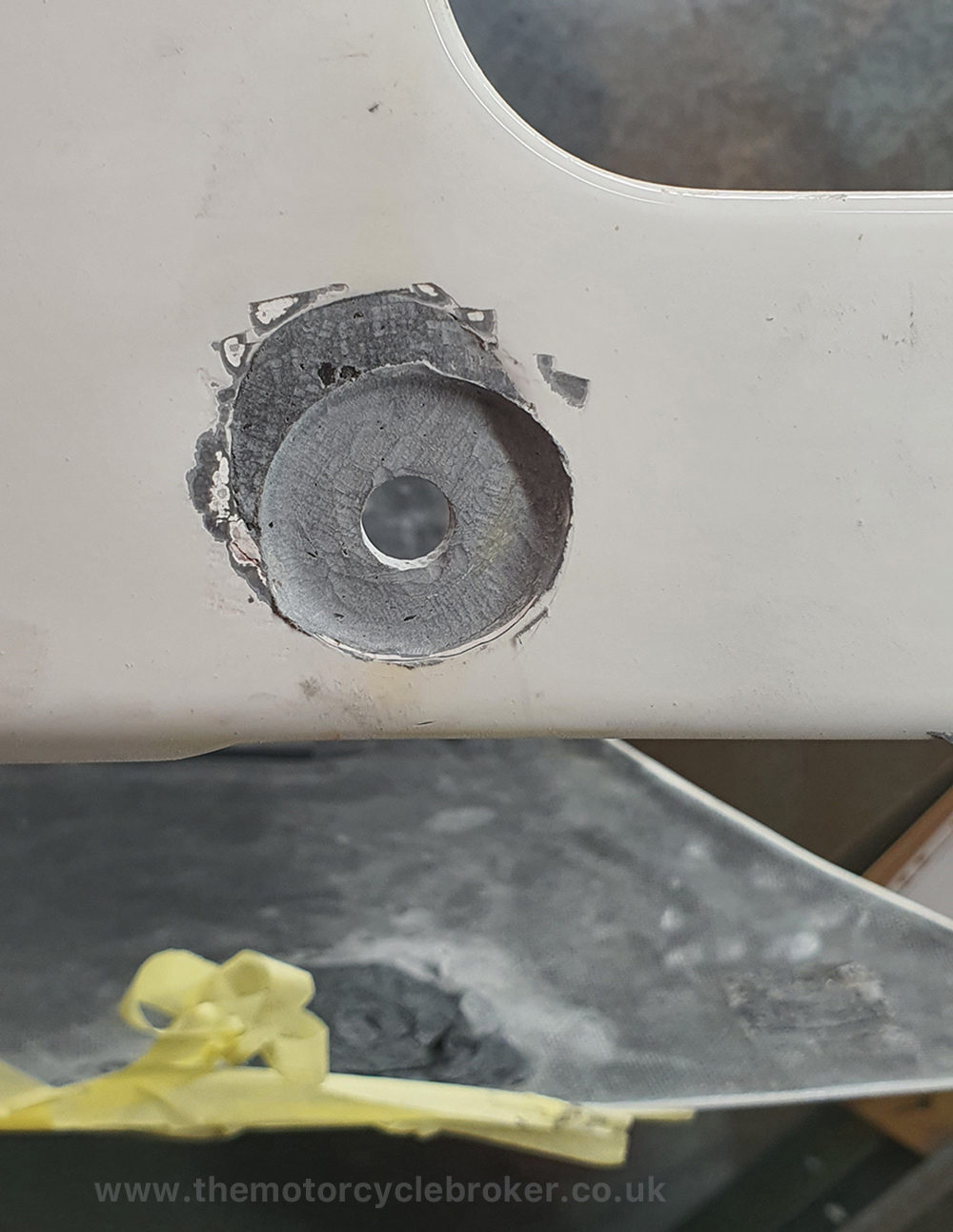
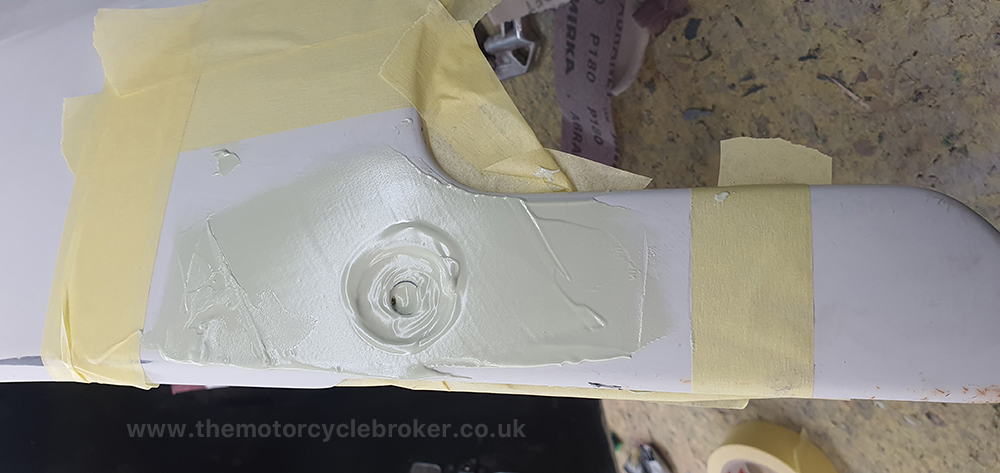
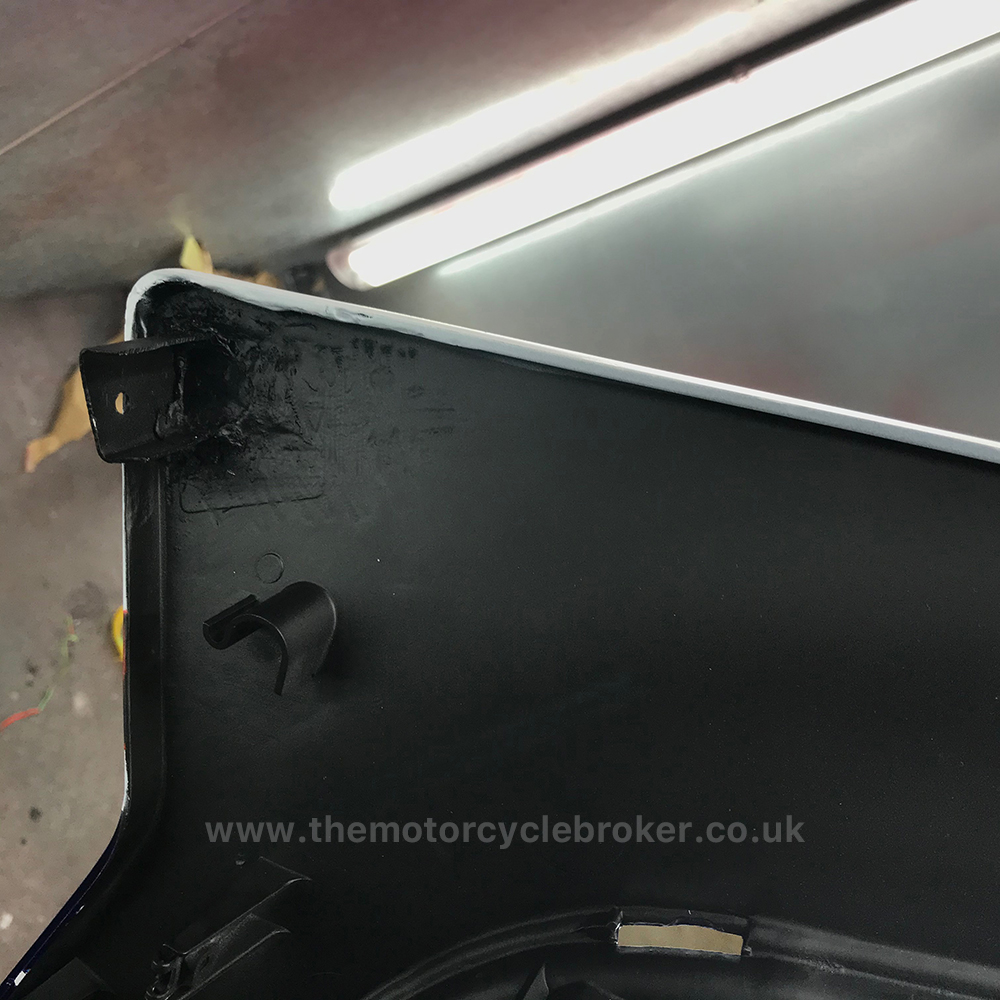
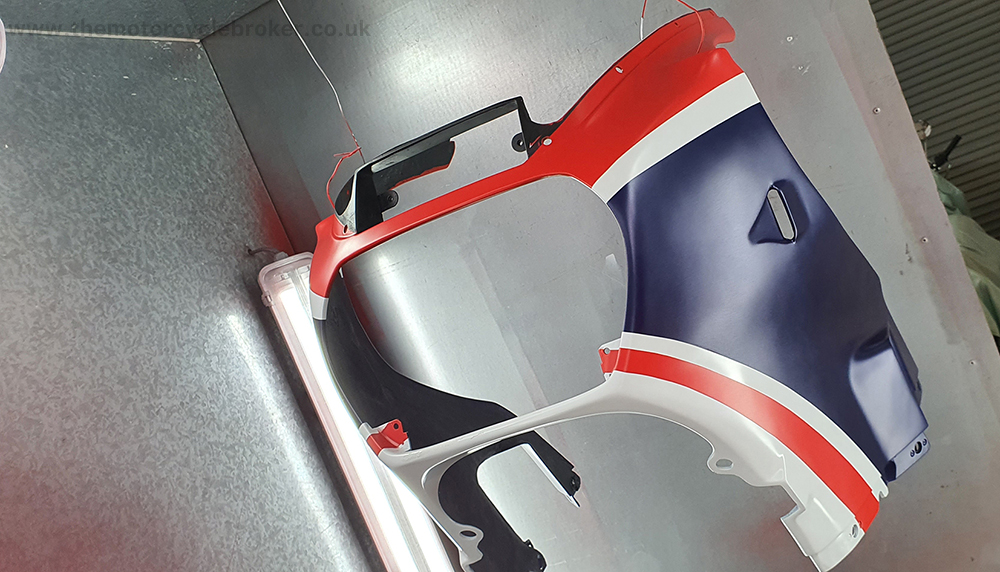
Ducati fibreglass
Ducati fibreglass bodywork is slightly different because it was not originally painted, it was a coloured gel coat. A green frame body kit had a silver gel coat for all of the body work. The early Mike Hailwood Replicas all had red fibreglass bodywork, the green was then sprayed over the red and the pinstripes were hand painted white (quite often by a drunk child). The black and gold 900SS had black gel coat fibreglass body kit with gold water slide transfers. The steel petrol tank was sprayed black to match the gel coat and on the UK spec machines built only for 1978, the gold on the petrol tank was sprayed on and the word Ducati was a water slide transfer. The fibreglass would micro blister, but this was not blistering in the paint, it was the gel coat micro blistering. When fibreglass is first made air becomes trapped in the gel coat. When it’s made properly, which most manufacturers did not do, the fibreglass is should be baked to force any air pockets out. After baking, the small air holes should then be filled and the fibreglass will be stable from then on.
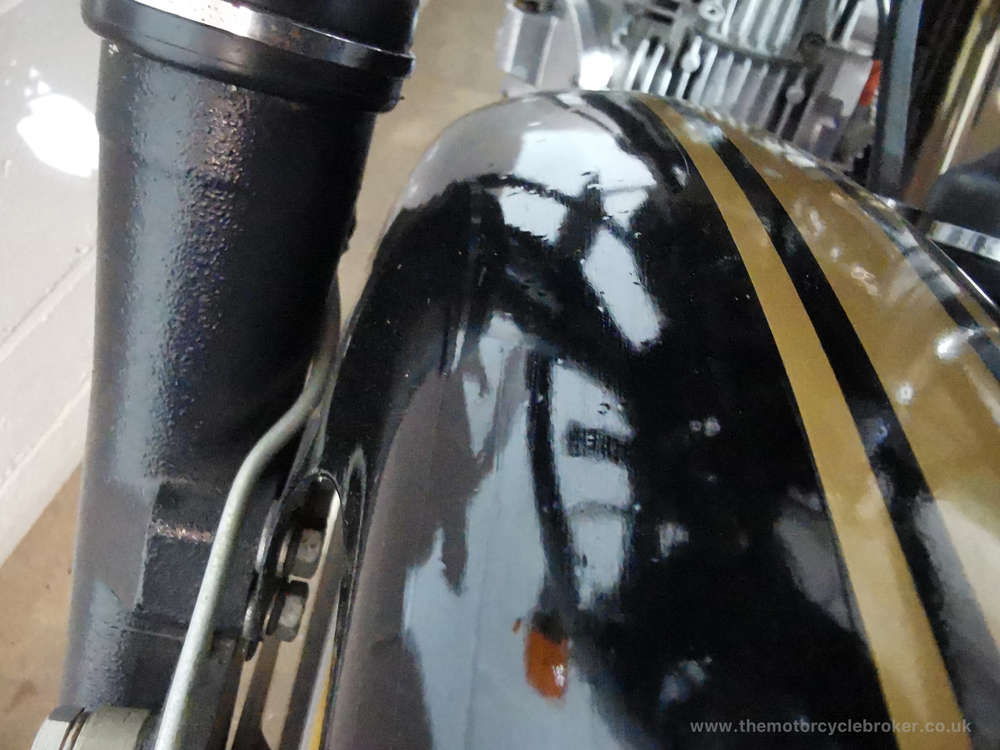
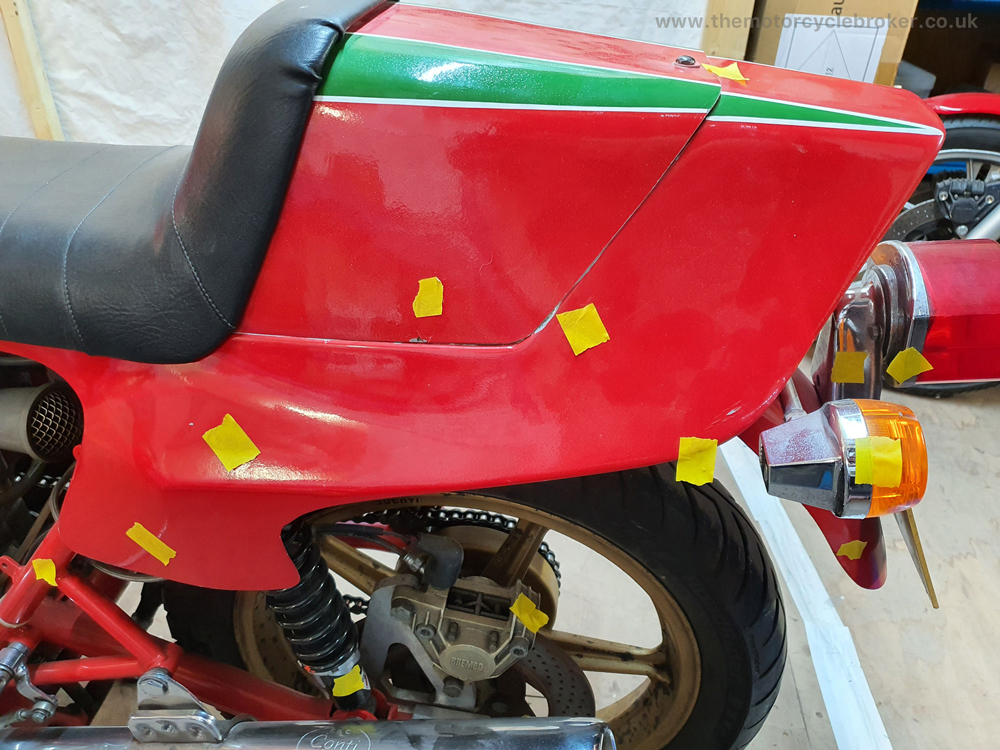
Many classic motorcycles are not what they claim to be
Many classic motorcycles are not what they claim to be when it comes to paint work. I have been in numerous collections with owners resolute in their claims that their machines are all original paint, yet there are no signs of transfers on early bevel drives and colours are clearly incorrect. In many cases the new paint is de-laminating and exposing the original paint, yet the owner is certain that their machines are all original paint. We have the privilege of having acquired machines we know to be original and we are also still storing those machines. This gives us a great archive of original colours, original finishes and how paint ages. Cellulose paint is not stable and does not age well, so be very suspicious of forty or fifty year old classic motorcycles with cellulose paint that shows no signs of ageing.
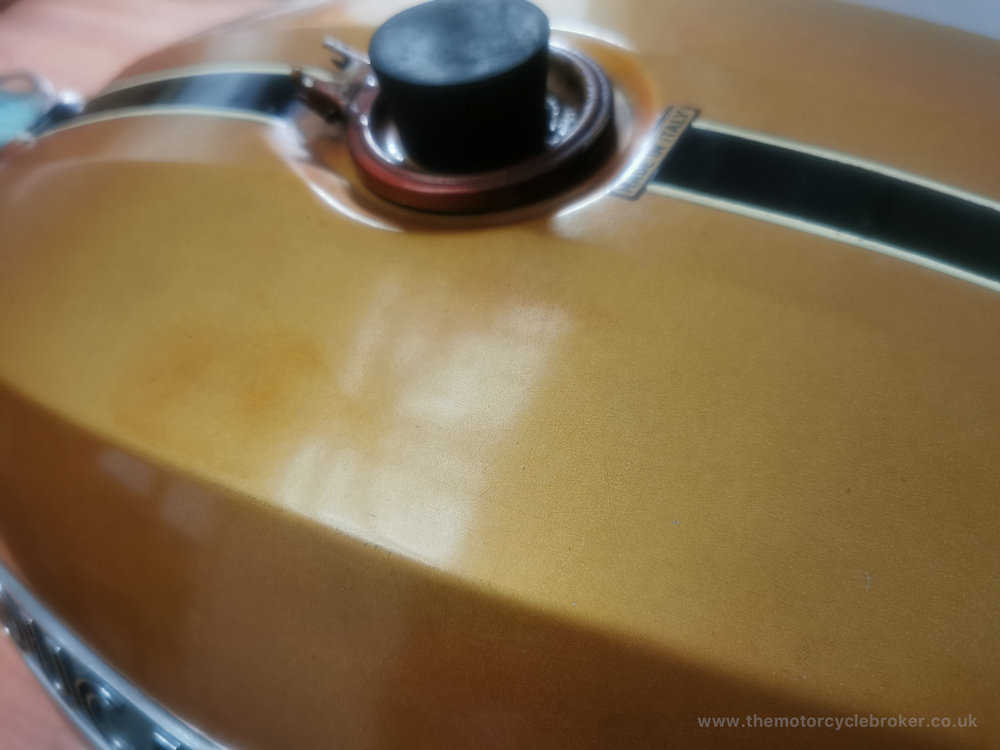
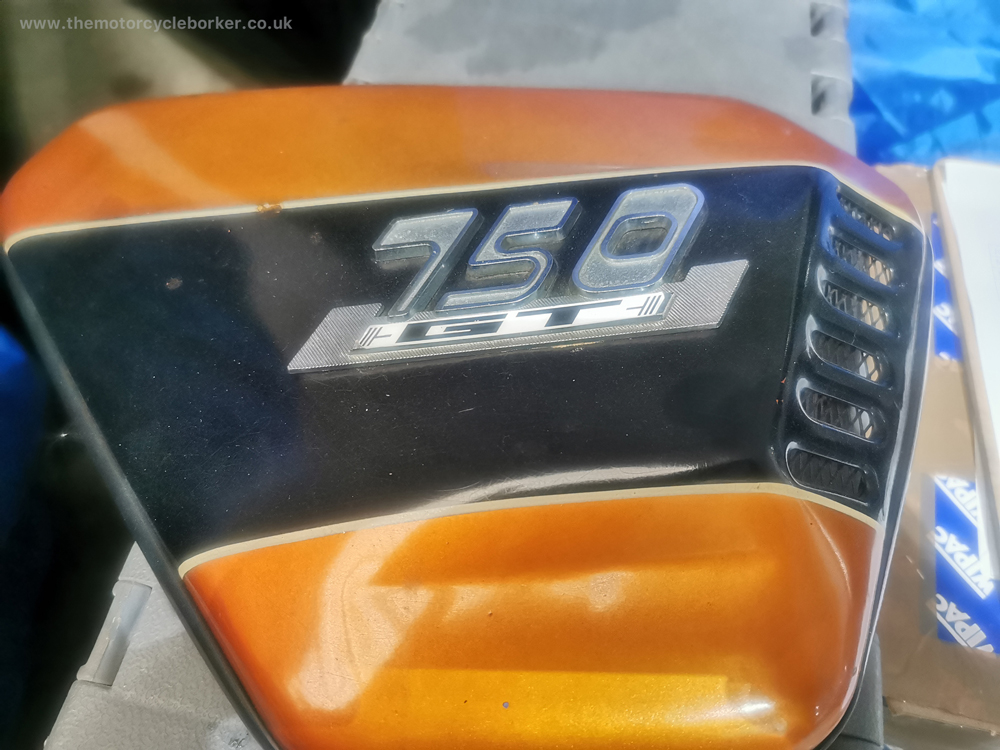
Matching colours
Matching colours to older machines is incredibly challenging. Even motorcycles that are twenty five years old are challenging to colour match. The chemical make-up of paint changes on a regular basis as stricter laws come in regarding automotive paint. Modern paint is completely different to the paint of twenty five or fifty years ago and, as such, the colours are different. The colour is a mixture of chemicals and any change to the carrier of those colours will change the character of the colour. Digital colour scanners will only get you in the ball park and even if the colour is a good match, the hue will behave differently to the original paint. It will not have the same depth and will not behave the same way in different lights as the original paint behaves. The only way of matching these old paints is to mix up 100 mls of paint and to spray an aluminium spray out card and allow the paint to fully cure. The spray out card must be offered up in differing types of daylight and at different angles. Many different base coats are tried to ensure that the modern paint colour behaves just like the original colour behaves. You don’t notice when it’s right, but you certainly do notice when it’s wrong.
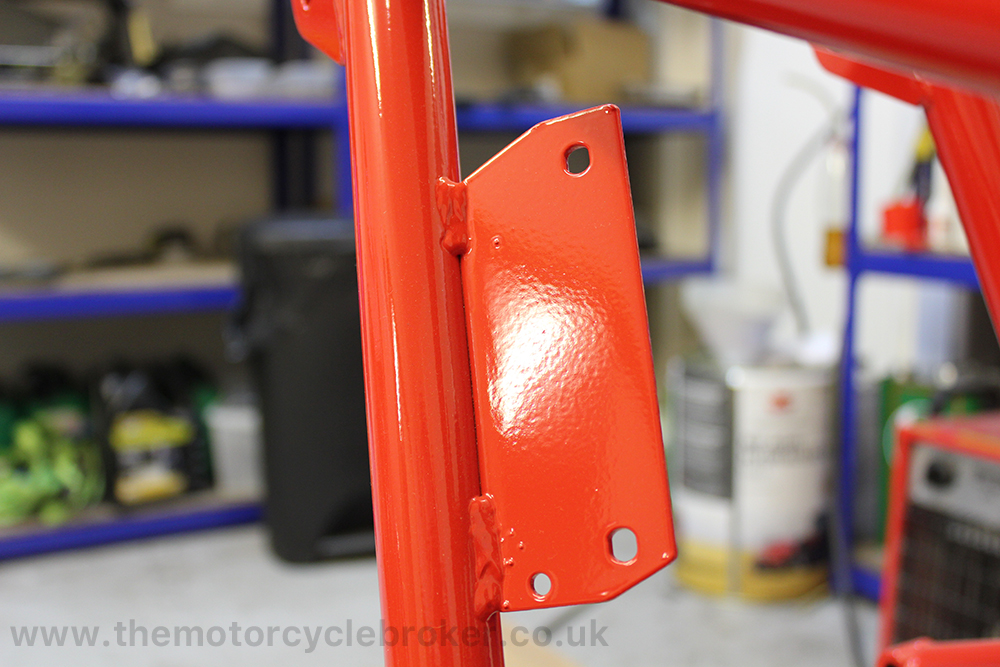
Modern paint finishes
Modern paint finishes are very different to cellulose finishes. Cellulose will pinch up within months of being sprayed to give an “orange peel” finish to the paint, as you can see in the picture below. As more thinners leave the paint, the more it will pinch up and increase the “orange peel” finish. Modern paints really do not pinch up to offer any kind of “orange peel” effect, they are designed to lay flat and give a mirror smooth finish. Getting modern paints to deliver a cellulose finish is a serious problem and takes a lot of time to achieve this effect. Modern 2K paint is also much more shiny than cellulose. It takes a long time to carefully polish modern 2K paint, using a special process we have developed, to knock the shine off. The other problem is that if the paint is polished too quickly or too much, then the “orange peel” effect will be lost and the piece needs to be repainted and the process started over.
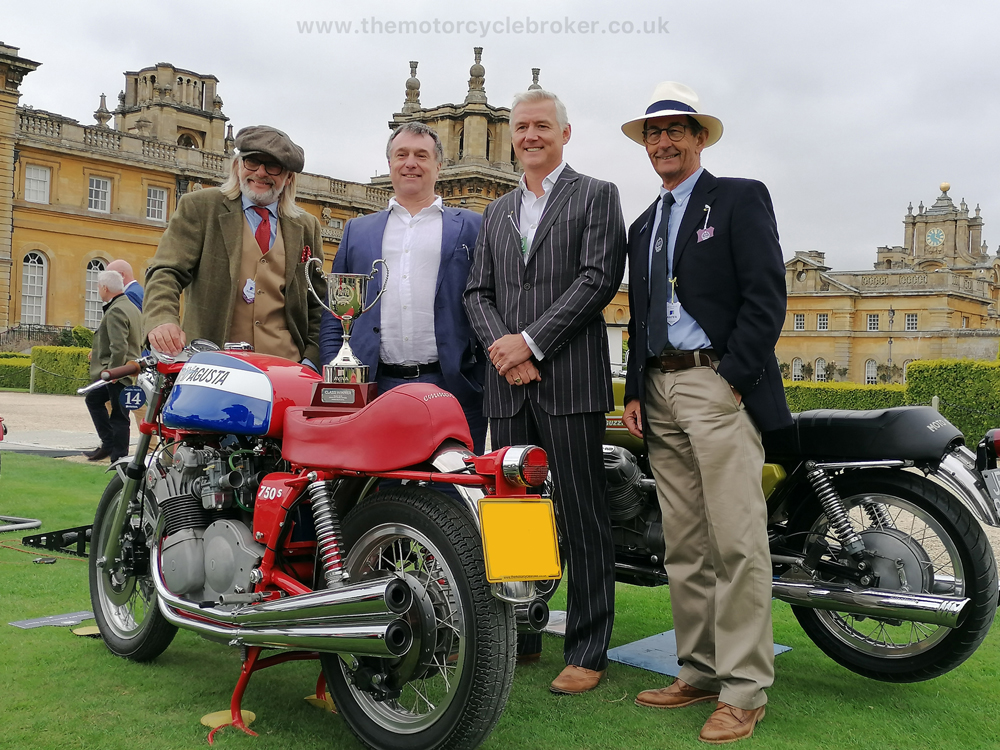
Authenticity in a classic motorcycle restoration
Authenticity in a classic motorcycle restoration really makes a difference to the value of a machine. The days of the super-shiny Dinky toy model motorcycle restoration are now over, except in America but that too will change soon enough. A classic motorcycle restoration which is authentic just has a special feeling about it and they remind us of the motorcycles when we were young. Investors are only interested in the highest quality motorcycle restorations, they are not interested in inauthentic, badly restored classic motorcycles. We won Salon Privé in 2021 because of the authenticity of the MV Agusta we entered for our client. Paint has to be correct, it’s what the eye notices first and colours that are wrong and incorrect finishes do not interest investors with a view to future values. Authenticity certainly costs more than the powder coated framed restoration project, thrown together in a shed by an amateur with a few tools because quality is expensive and takes longer. If you want an original or a super high quality restored classic motorcycle, call The Motorcycle Broker.
- Most collectible Ducati 916 SP - June 20, 2024
- Classic Motorcycles: To ride or not to ride? - June 17, 2024
- Classic Motorcycles: To ride or not to ride? - June 17, 2024








Leave a Reply